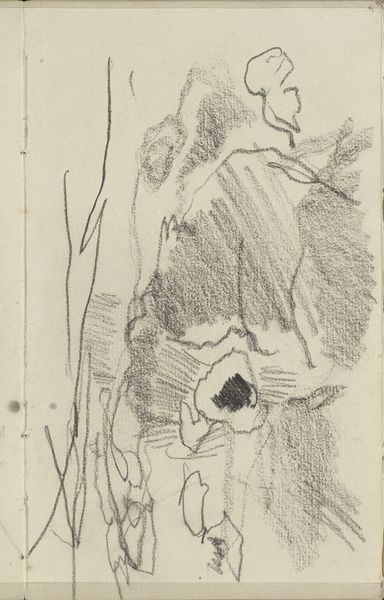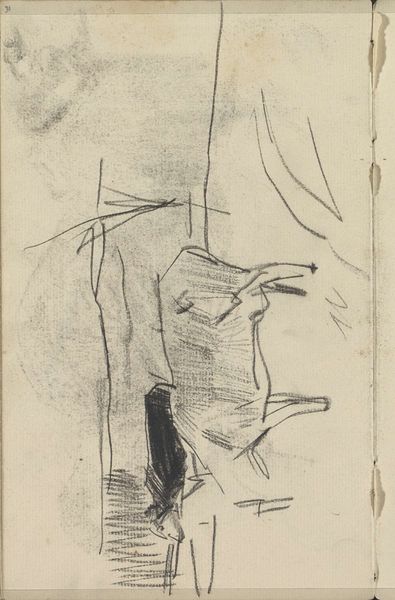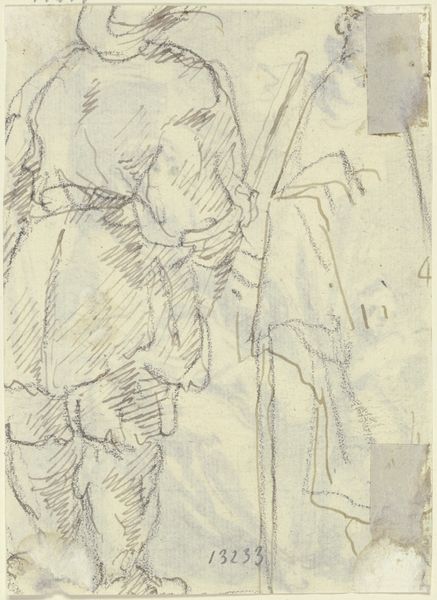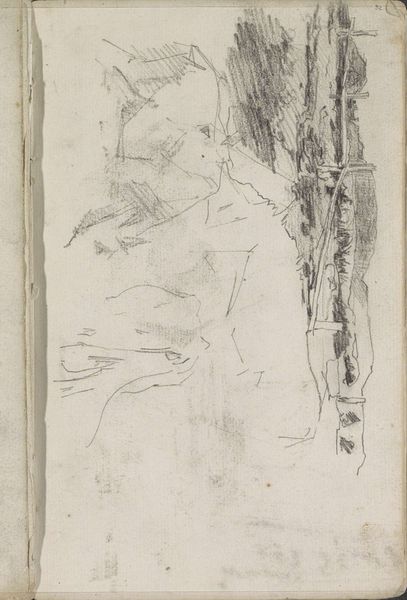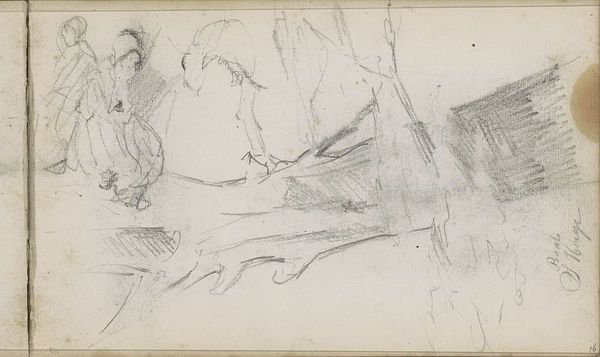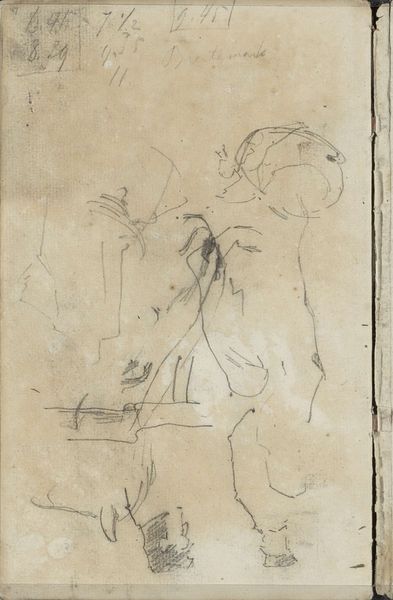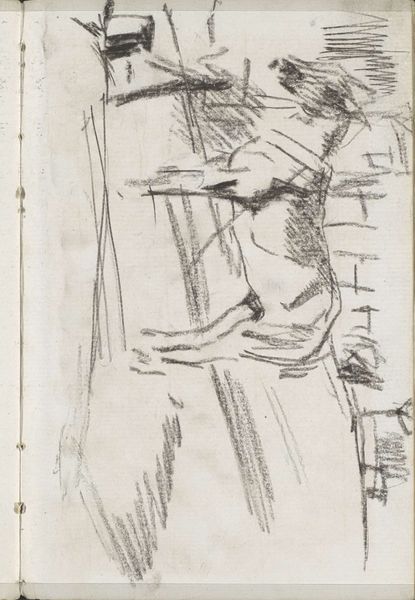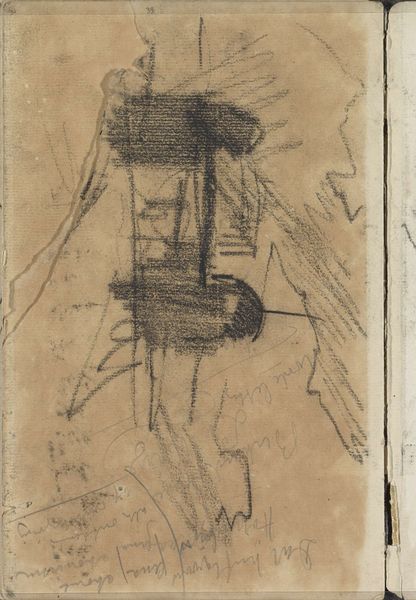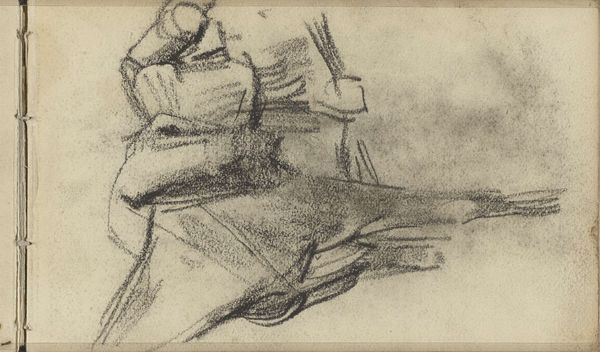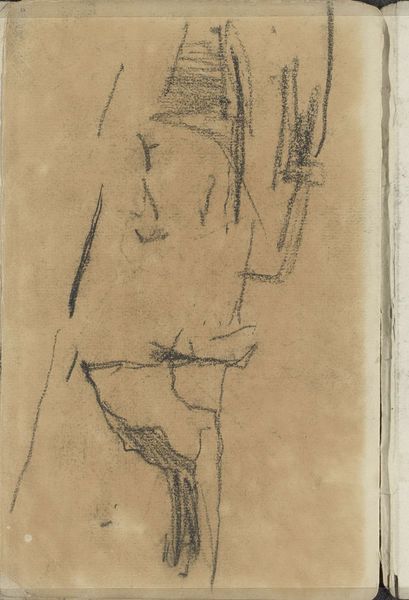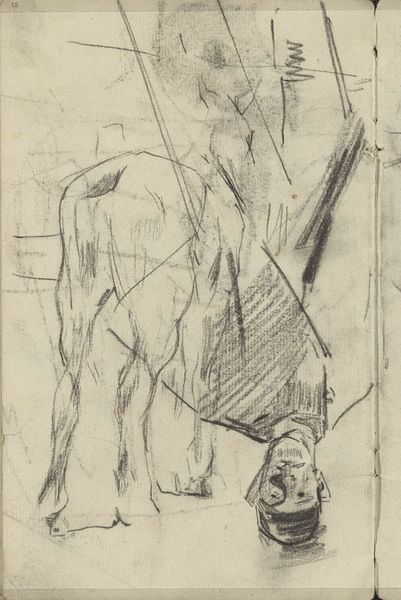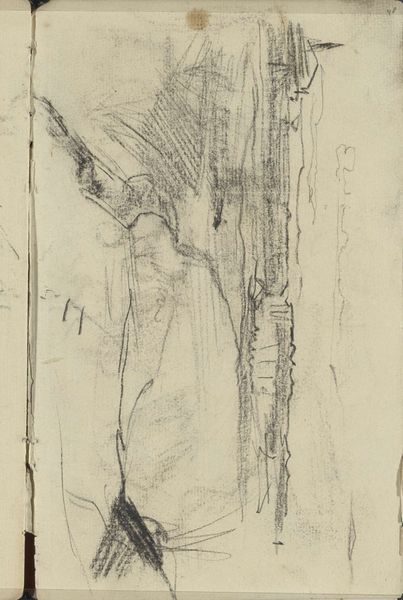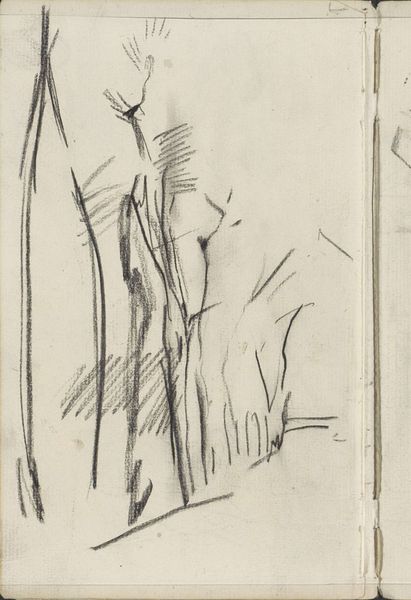
Kar in een landschap, mogelijk een duinlandschap Possibly 1882 - 1886
0:00
0:00
georgehendrikbreitner
Rijksmuseum
drawing, pencil, charcoal
#
portrait
#
drawing
#
impressionism
#
pencil sketch
#
charcoal drawing
#
pencil
#
charcoal
#
watercolor
Copyright: Rijks Museum: Open Domain
Editor: Here we have "Kar in een landschap, mogelijk een duinlandschap," or "Cart in a Landscape, possibly a dune landscape," a drawing in pencil and charcoal by George Hendrik Breitner, likely created between 1882 and 1886. It's currently at the Rijksmuseum. The sketch is really evocative, capturing a certain stillness, almost melancholic, with these muted tones. What stands out to you most about this piece? Curator: That feeling of stillness is key, isn't it? Breitner was working in Amsterdam during a time of massive social upheaval, industrialization, and urbanization that drastically changed people’s relationship to their surroundings and created a heightened sense of class differences and anxieties about the present. This sketch invites us to consider labor—perhaps the burden carried by both human and animal –within a landscape undergoing transformation. What can art do to unveil these complex connections? Editor: That's fascinating! The "burden" – it definitely re-contextualizes the image. But is that really there in the drawing itself, or are we projecting later social awareness onto it? Curator: It’s both. Art never exists in a vacuum. Breitner was known for documenting the everyday life of working-class people. The very act of him choosing this subject – a cart, likely used for manual labor, in this in-between space – reflects an awareness of social issues. How might the artist’s own positionality, being a man of his time, affect his representation of labor in the landscape? Editor: I see what you mean. I hadn’t really thought about Breitner’s other works when looking at this. It's interesting how much context can influence interpretation. Curator: Exactly. And remember, Impressionism itself, with its emphasis on fleeting moments and subjective experience, provided a visual language for capturing a rapidly changing world. Looking closely, you will discover social injustice and political statements. Editor: So by looking at this piece through an intersectional lens, we can better understand the artwork’s message, and appreciate Breitner’s technique even more. Thank you for sharing.
Comments
No comments
Be the first to comment and join the conversation on the ultimate creative platform.
